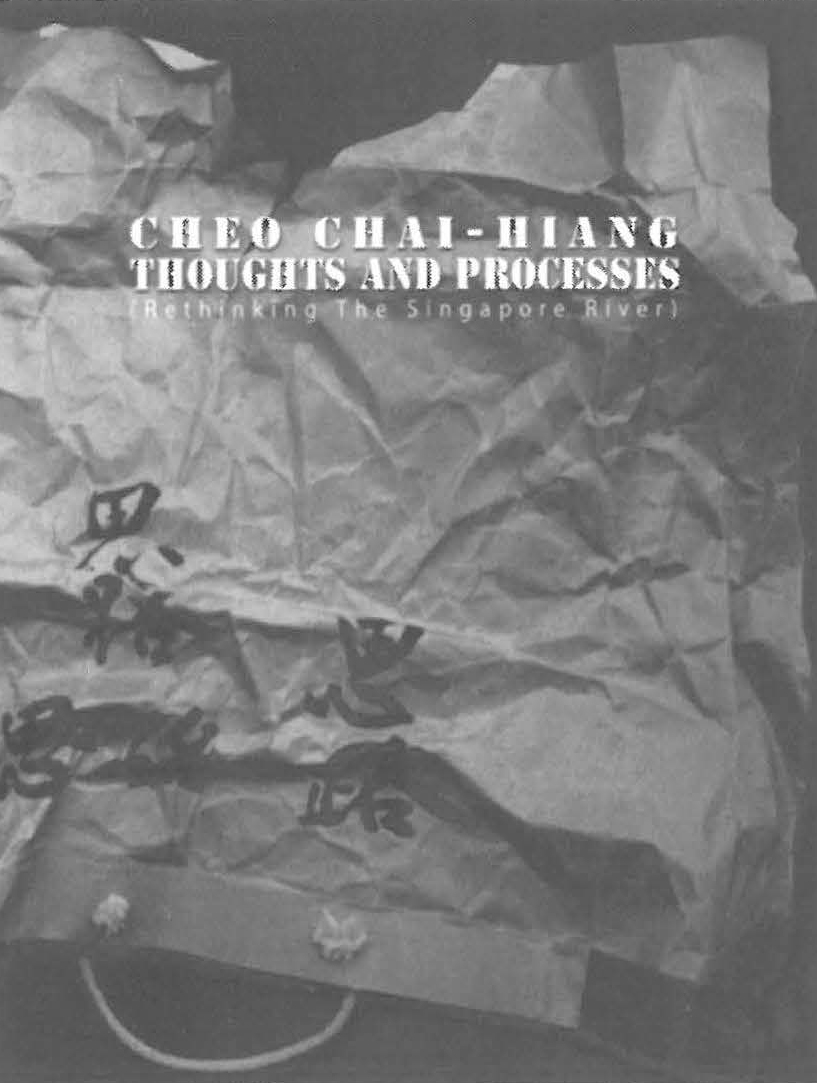
The essays and presentation in this monograph serve Cheo Chai-Hiang well. The documentation of installations and performances by the artist are enticing and the essays raise awareness of the artist's work. They paint a backdrop to Cheo' s progress or journey, give valuable insights into the work and provide a clear analysis of the circumstances which have formed it.
Cheo started his art practice in mid 1960s Singapore. He was an active member of Singapore's Modern Art Society at the time of Singapore's separation from Malaya and began as a self-taught painter of 'beautiful pictures'. T.K. Sabapathy briefly discusses this event and the impact of Singapore's enforced emergence as an independent country on contemporary (modern) art practice there. His essay outlines Cheo' s growing dissatisfaction with the confines of a practice focused on painting, his study in UK in the early 1970s and in particular his continued contribution to and dialogue with Singapore's art scene.
Art training in the UK and elsewhere in the 70s adopted an interdisciplinary approach and while Cheo was enrolled in Printmaking he had ample opportunity and encouragement to develop a more conceptual attitude to art practice. The atmosphere was one of questioning the very nature of art. Ideas and thought processes were important, and the distinctions between art and non-art were challenged. As T.K. Sabapathy points out this disposition towards challenging authority had begun with Cheo in Singapore and his early dissatisfaction made conversion possible.
This inclination has remained a prominent feature of Cheo's output to the present day although at the same time, the influence of printmaking methodology is also evident. The use of paper, cutting, folding, texture and line, led to collage, assemblage and the use of unconventional materials like string and wire, which are also present in more recent large scale installations. Now the audience is asked to actively participate in constituting the artwork and in constructing meaning and significance.
This essay seemed to end abruptly with a gap between the late 1970s and a description of the large scale floor drawings/ installations/ public performances of 1988. These were shown after an absence of twelve years at the Singapore Museum Art Gallery (also in Sydney, Brisbane and Perth) but perhaps this was to give us an indication of how far Singapore (and other) art audiences had moved from the mid-1970s fixation with painting and the connection that Cheo has had with this shift.
Cecily Briggs gives a chronological analysis of student work of the 1970s, sometimes poorly photographed and Cheo's Rome residency along with the evolution of his attitude of 'making do' whereby what is important is the idea behind the work and not its execution. This essay became more interesting when it touched on issues of travel and the migration of Chinese people from the mainland to other parts of SE Asia and cultural attitudes towards this phenomenon. Temporary migration was considered appropriate, even essential but more permanent absence considered disloyal and unfilial. The essay touched lightly on Chinese cultural identity, Cheo's first visit to China in 1993 and the specifically Singaporean aspects of his work.
As with the Chinese words on the cover si lu meaning train of thought, so these essays outline a journey with links to the artist's thoughts and working processes. It is work that has changed with the times and kept abreast with current contemporary art styles while maintaining its personal content.
Singapore - Europe - Australia - not so much is said of the influence of Australia on the work. While Cheo moved here in 1980 this book was published in Singapore by Singapore Art Museum & Nanyang Academy of Fine Art, a comprehensive retrospective publication coinciding with an artist in residency program. I think art enthusiasts in both Singapore and Australia will find this book of great interest.












